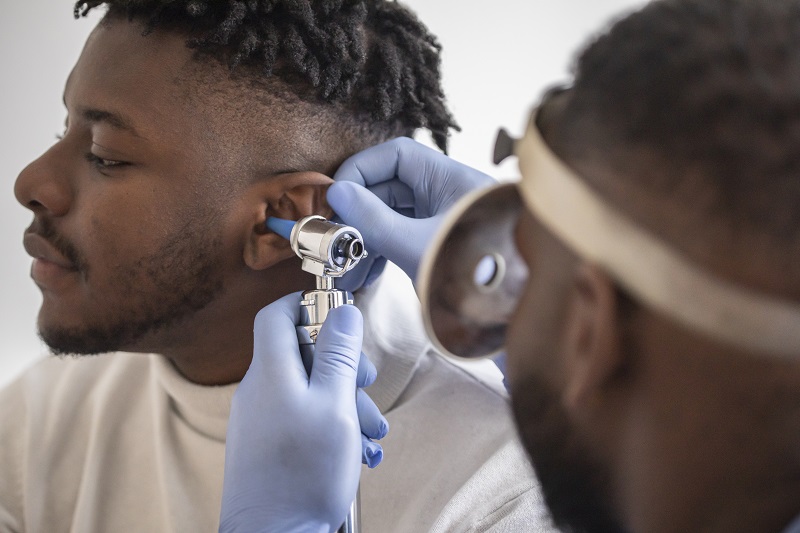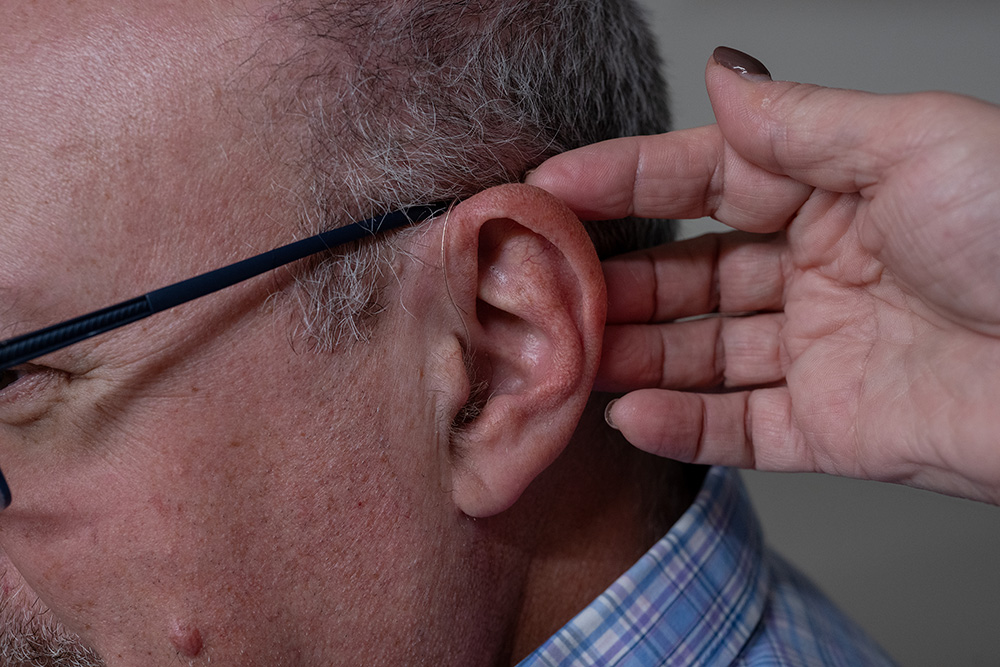What Are the 3 Types of Hearing Loss?

August 17, 2021
Maybe you have trouble hearing someone over the phone or when there’s background noise. Soft sounds might be hard to make out, and even louder sounds can seem muffled.
If you’re worried hearing loss is the culprit, you’re in good company. About 15 percent of American adults report some trouble hearing, according to the National Institutes of Health. But impaired hearing can happen at any age, indicating a problem with parts of the ears, with sound passing through the ears or the pathway that leads to the brain to process hearing.
“There are many different degrees of hearing loss, and everyone is different in how they experience it,” explains Virginia Gural-Toth, AuD, CCC-A, manager of the Audiology, Tinnitus and Balance Programs at the Center for Audiology at JFK Johnson Rehabilitation Institute. “It’s also important to know you can lose hearing not just in loudness but in clarity—meaning no matter how loud words are, they just don’t sound very clear.”
Type Depends on Cause
Hearing loss can be broken down into three main types, depending on what part of your hearing is damaged. These types include:
- Sensorineural: The most common, this is due to inner-ear damage stemming from a variety of possible causes such as aging, noise exposure, heredity, illness, medications or head trauma. “This type of hearing loss is typically not medically correctable, but hearing aids can help,” Dr. Gural-Toth says.
- Conductive: This loss occurs when sounds can’t get through the outer and middle ear, whether because of fluid or wax buildup, a hole in the eardrum, an ear infection or misalignment of the bones in the middle ear. “This is a hearing loss that’s usually reversible with treatment,” Dr. Gural-Toth notes.
- Mixed: This type happens when both sensorineural and conductive hearing loss occur at the same time, such as someone who works near loud noises and has fluid buildup from an ear infection. “Evaluation is important to make the appropriate recommendations for follow-up, since this loss involves multiple parts of the ear,” Dr. Gural-Toth explains.
How Is Hearing Loss Diagnosed?
If you’re having trouble hearing, Dr. Gural-Toth recommends scheduling a visit with your primary care doctor.
Your primary care doctor may refer you to an audiologist for further hearing testing, which can reveal whether the hearing loss can be medically corrected or if hearing aids can help you hear better and improve your overall quality of life. Rapid advances in hearing aid technology makes these tiny devices increasingly effective at compensating for most, though not all, hearing deficits, she says.
Next Steps & Resources
- Meet our source: Virginia Gural-Toth, AuD, CCC-A, manager of Audiology, Tinnitus and Balance Programs at the Center for Audiology at JFK Johnson
- Make an appointment with a primary care physician online or call 800-822-8905.
- Find an audiology location near you.
The material provided through HealthU is intended to be used as general information only and should not replace the advice of your physician. Always consult your physician for individual care.






